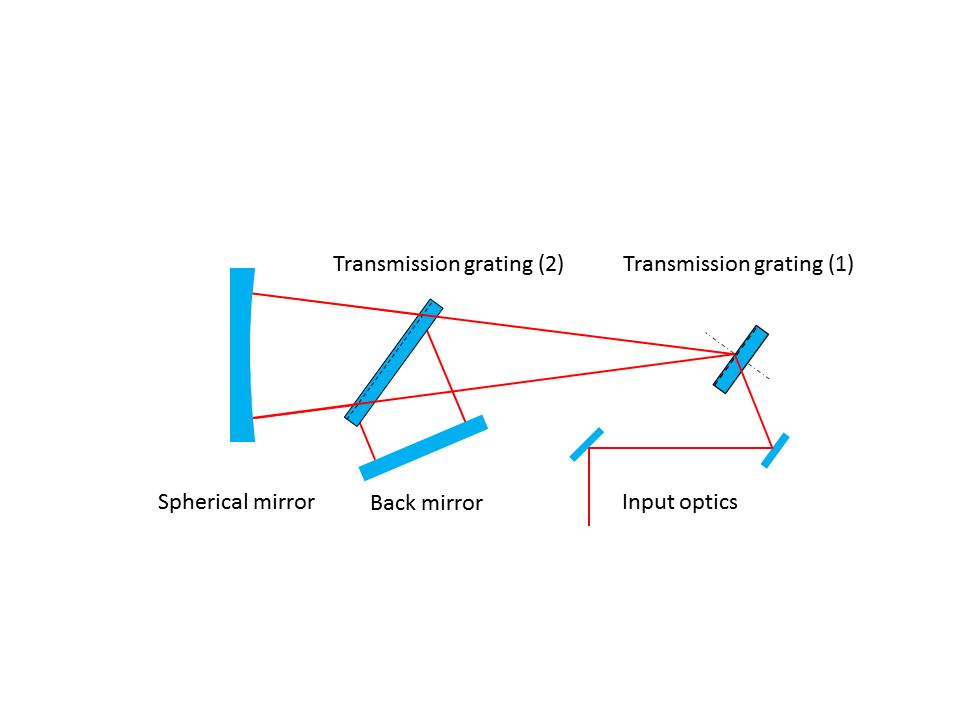The ultrashort pulses produced by the oscillator cannot be amplified directly to high energy. A pulse of 12 femtoseconds duration with an energy of a few tens of Joules would have such a high intensity that it would cause electrical breakdown as it passed through solid materials, and would suffer significant distortion even while propagating through ordinary air.
To avoid these problems, almost all high-intensity short-pulse lasers use a technique called “chirped-pulse amplification”, in which the short pulse is stretched by a factor of many thousand times before amplification, then recompressed in a vacuum to its original duration before being focused onto a target. The intensity in the stretched pulse is low enough to avoid the problems. This page describes the pulse stretching technique used in the Gemini front end.
The pulse stretcher is a wavelength-dependent delay line based on diffraction gratings. The effect of the stretcher is to delay the shorter wavelengths more than the longer ones, as shown in the diagram below. The pulses are stretched in time to a duration of 530 picoseconds, a factor of 44000 times longer than the original oscillator pulses, and the peak intensity of the pulses is reduced by the same factor.
In 2014 the original stretcher was replaced by a
new version that uses transmission gratings. Studies of the contrast of the Gemini
pulses had revealed that the large grating in the pulse stretcher was a factor
in generating a contrast pedestal in the compressed pulses. Offline tests
showed that the pedestal was reduced by more than a factor of 10 when
transmission gratings were used in the stretcher. The new stretcher had better
throughput than the old one, and there was an improvement in the pulse
contrast, although less than expected.
At the end of the laser chain, another pair of diffraction gratings is used to reverse the effect of the stretcher by delaying the longer wavelengths more than the shorter ones, thereby compressing the pulse to its original length.


